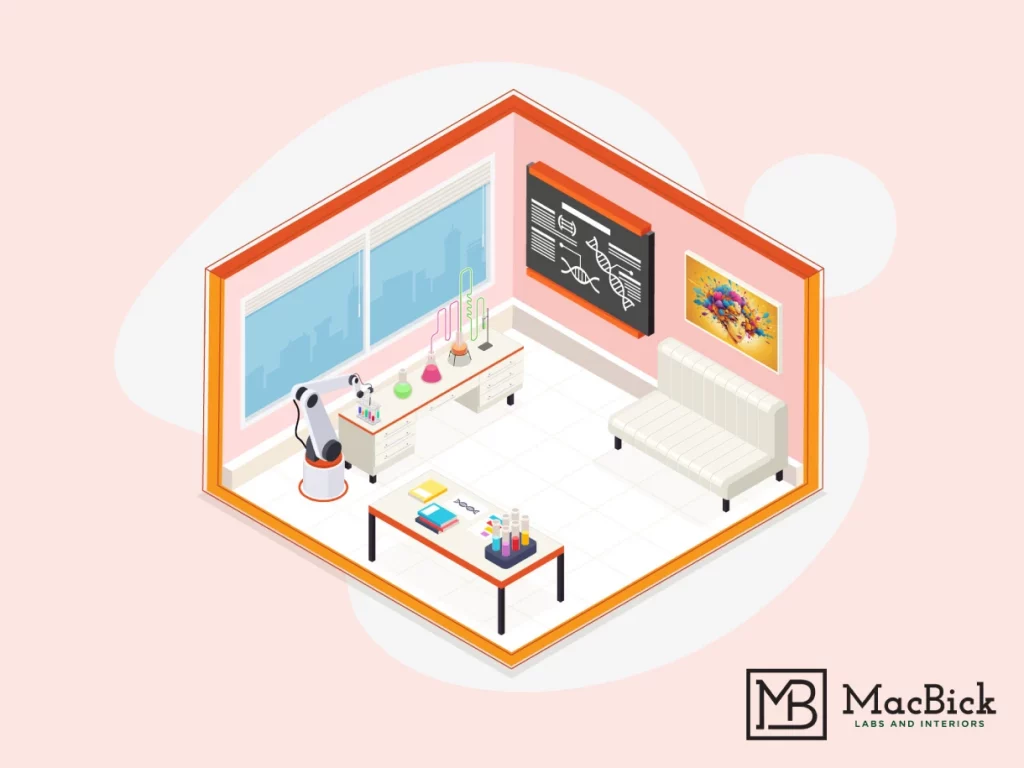Laboratories are spaces where researchers and scientists unfold groundbreaking breakthroughs. Space constraints and inefficiency in the laboratory casework lead to bottlenecks, which makes scientists struggle to locate and access necessary equipment promptly.
To overcome these challenges, the integration of modular casework becomes crucial. It cultivates a more productive and well-designed laboratory that guarantees functionality, safety, and efficiency within the lab setting.
Let’s begin our exploration of how optimizing lab spaces with modular casework can cultivate a vibrant and dynamic laboratory setting.
Designing Labs with Modular Casework
Well-designed cabinetry, countertops, and storage are the backbone of the functional laboratory space. The use of modular casework serves as the cornerstone for modern lab environments. The storage units are meticulously engineered to cater to the distinct demands of laboratory settings.
What to Consider When Designing Modular Casework in Laboratory Space?
Designing a modular casework in the laboratories requires careful planning and proper coordination. Here are some factors to consider when designing modular casework for the laboratories.
- Assess Space Requirements: Evaluate the specific needs of the scientists to determine the types and sizes of storage, work surfaces, and equipment needed.
- Functionality Requirements: Request precise functional specifications from the scientists. Understanding these requirements is crucial for crafting customized casework tailored to conduct specific tasks.
- Flexibility and Adaptability: Opt for modular casework that easily adapts to changing needs. It will ensure seamless modifications and updates without needing a substantial overhaul.
- Storage Solutions: Plan everything in advance to accommodate dedicated space for laboratory supplies, equipment, and hazardous materials separately.
- Technology Integration: Consider incorporating power outlets and secure storage for electronic devices in the casework.
- Workflow Efficiency: Strategically plan the layout to ensure that the placement of modular units optimizes overall workflow and minimizes unnecessary movement.
- Ergonomics and User Comfort: Design the casework considering the comfort of scientists and researchers. The ergonomically designed casework ensures easy accessibility to items and minimizes strain during tasks.
- Compliance with Regulations: Ensure that the design of modular casework aligns with safety and regulatory standards for laboratory environments when handling hazardous materials.
How Can You Maximize the Laboratory Space with Modular Casework?
Problems like space constraints in the labs are experienced globally, as per the survey conducted among the professionals working in the laboratories. You can make the most effective use of the laboratory space by employing modular casework. The modular approach provides multiple opportunities for increased lab efficiencies. You can begin with:
Utilizing Vertical Space Effectively in the Labs
You can maximize the effective use of vertical space in the laboratories by integrating overhead cabinets and storage units. The modular approach in designing modular casework offers flexibility in design and rearrangement according to evolving laboratory needs.
Incorporate Adjustable Height Laboratory Benches
Design laboratory benches with adjustable heights or interchangeable components. It provides a safe working environment for researchers and enhances collaboration and overall efficiency in the laboratory setting.
Integrate Multi-Functional Units in the Laboratory Design
Integrating multi-functional units into laboratory design serves versatile purposes. It promotes efficiency and optimizes space utilization. It allows researchers to access materials and work on projects within close proximity.
Distribute Space For Performing Lab and Non-Lab Functionality
Allocate space for both laboratory and non-laboratory functionalities. Ensure a clear separation between areas to maintain safety standards and minimize risks.
Embrace Sustainable Design Principles in Laboratory Casework
Make a conscientious choice of materials and practices. It minimizes environmental impact while promoting a healthier work environment. Choose materials that are certified eco-friendly and easily recyclable. Also, Opt for water-based finishes and coatings that have minimal environmental impact.
Conclusion
Maximizing laboratory space with modular casework involves careful planning and consideration of various factors. Utilizing vertical space effectively through overhead cabinets and storage units proves advantageous. It optimizes space, enhances functionality, and fosters a conducive environment for groundbreaking discoveries in scientific research.
Contact the MacBick Labs and Interiors team to experience a seamless fusion of cutting-edge technology and excellence in crafting your labs or other business establishments.



